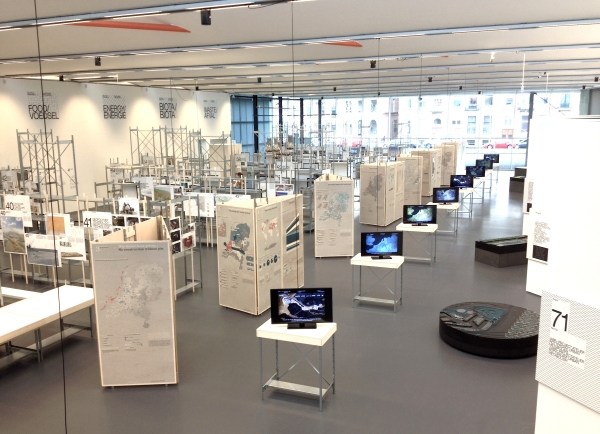Technocrat Landscape Design
The Challenges of a Metabolic City
Architectural Biennale, Rotterdam, May 29th–August 24th, 2014
Text: Levente Polyák

The Urban Metabolism. Photo: Levente Polyák
The basic concept of the International Architecture Biennale of Rotterdam (IABR) is that the environmental issues of the whole world are condensed in cities – thus their solutions must also be found there. It means that energetical transitions, climatic changes, biodiversity and natural resources must be dealt with as tasks involved in urban planning. The romantic distinction we tend to make between the city and nature cannot be sustained anyway: in the anthropocene era human activities exert influence on the atmosphere of Planet Earth to such an extent that there is no nature now free from human intervention, and no natural equilibrium that we could restore or return to. In this situation it is the task of design professions to make urban landscapes efficient, flexible and resistant. Dirk Sijmons, the curator of IABR refers to it as a „carpet metropolis”, which is a result of various components of the landscape that have intertwined. According to Sijmons, it is landscape architecture and design which is most suitable for this task as it is traditionally positioned between society and nature, towns and the countryside, and as such it also mediates between them.





